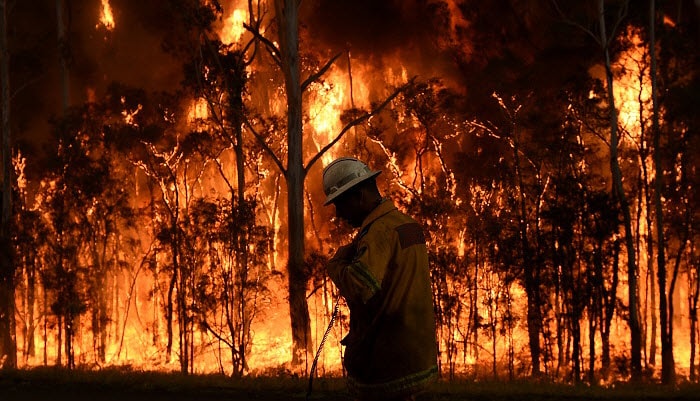Proactive Home Protection: Leveraging the Insights of a BAL Report
Wiki Article
Ensuring Bush Fire Protection Through Correct BAL Record Evaluation
In the realm of bush fire security, the careful analysis of Bushfire Attack Level (BAL) records stands as a keystone for protecting homes against the terrible impact of wildfires. With ecological variables and residential or commercial property characteristics playing significant roles in figuring out the level of danger, a complete understanding of BAL scores becomes important. The genuine essence lies not simply in comprehending these records but in deciphering them successfully to develop tailored fire protection approaches. By delving into the importance of BAL record evaluation, we discover a world where notified choices pave the course in the direction of strengthening home security and strength in fire-prone regions.
Understanding Bushfire Strike Level (BAL)
In the realm of bushfire protection, comprehending the Bushfire Strike Degree (BAL) is vital for ensuring efficient mitigation approaches. Recognizing the BAL score of a building is critical for residential or commercial property home builders, proprietors, and policymakers to implement suitable measures to protect versus bushfire dangers.
Importance of BAL Record Evaluation
A vital aspect in bushfire protection preparation includes the comprehensive evaluation of BAL records to assess the potential dangers and establish suitable mitigation techniques. BAL reports provide crucial details regarding the prospective impact of bushfires on a residential or commercial property based on numerous aspects such as vegetation type, range to prospective fire hazards, and incline of the land. Examining these reports with accuracy is critical in developing reliable bushfire security measures customized to the particular threat profile of a home.Implementing Fire Defense Steps
Implementing efficient fire protection measures is critical for safeguarding buildings in bushfire-prone areas. Among the primary methods to enhance fire security is by creating defensible area around buildings. This entails clearing combustible plant life, such as dry fallen leaves and branches, within a particular radius of the residential or commercial property. In addition, installing fireproof roof covering materials can help in reducing the risk of ashes igniting the roofing system throughout a bushfire. Correctly maintained displays and gutters are also vital to prevent debris accumulation that might sustain a fire.In addition, having a sufficient and properly maintained water system, such as a storage tank or pool, can assist firefighters in their initiatives to shield the building. It is very important to have a clear discharge strategy in position and to guarantee that all residents are familiar with the treatments. Furthermore, having firefighting tools conveniently offered, such as hose pipes and fire extinguishers, can assist in tackling little area fires before they rise. Generally, executing a combination of these fire defense steps can considerably increase the chances of guarding homes during bushfire occasions.
Mitigating Threats in Fire-Prone Areas
To strengthen my latest blog post properties versus bushfire hazards, a strategic focus on mitigating risks in fire-prone locations is essential. One important aspect of risk mitigation is keeping defensible room around buildings by getting rid of combustible plants, making sure appropriate spacing between trees and structures, and using fire-resistant landscape design practices.Furthermore, creating or retrofitting buildings with fire-resistant products and making sure appropriate maintenance of roof coverings, seamless gutters, and external cladding look at here can significantly boost the property's strength to bushfires. Establishing and practicing a bushfire emergency strategy with all occupants, consisting of emptying procedures and communication approaches, is likewise vital in mitigating threats efficiently. By taking on a positive method to take the chance of mitigation in fire-prone locations, residential property proprietors can better secure their assets and boost overall bushfire readiness.
Ensuring Residential Or Commercial Property Safety And Security and Durability
Making certain the security and strength of buildings in fire-prone areas calls for an unfaltering dedication to robust precautionary measures and tactical preparation. Residential or commercial property security starts with executing efficient actions to minimize fire threats. This includes maintaining a defensible room around the residential property by clearing flammable plants, ensuring proper maintenance of rain gutters and roof coverings, and making use of fire-resistant building materials. Regular maintenance of firefighting devices, such as pipes and lawn sprinkler, is additionally crucial to home strength.Durability, on the other hand, includes the capacity of a residential property to endure and recoup from a bushfire. By proactively addressing these facets, home proprietors can better secure their properties and loved ones from the danger of bushfires.
Conclusion
In final thought, making certain bushfire protection with correct BAL report evaluation is essential for comprehending the degree of risk positioned by bushfires and carrying out necessary fire protection procedures. By minimizing risks in websites fire-prone areas and making sure residential or commercial property security and durability, individuals and areas can much better prepare for and respond to bushfire occasions. It is necessary to focus on fire precaution to secure lives and property in these high-risk environments.In the realm of bush fire protection, the precise analysis of Bushfire Assault Level (BAL) reports stands as a foundation for protecting homes against the destructive effect of wildfires (BAL Report). Comprehending the BAL score of a residential property is vital for property policymakers, proprietors, and home builders to implement appropriate actions to guard versus bushfire risks

BAL reports provide important details regarding the possible influence of bushfires on a residential or commercial property based on numerous aspects such as vegetation kind, distance to potential fire risks, and slope of the land (BAL Report). In general, applying a combination of these fire protection actions can dramatically increase the possibilities of safeguarding homes throughout bushfire events
Report this wiki page